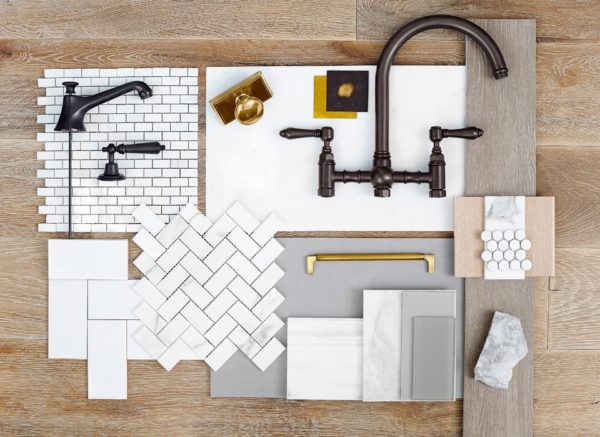
When a prospective client calls our office they have two main questions that often become the determining factor in whether we can work together or not; When can you start? and how much will it cost? Although these two questions are important and valid, they often can only be answered after we ask a few questions of our own;
How far along in the planning process are you?
Do you have a clearly defined scope of work?
Have you checked your local town laws and regulations regarding ability to perform the work?
Are architectural plans prepared and contain enough information to provide an accurate cost estimate?
Have you thought about the materials and finishes your project will include?
Many homeowners are very focused on cost and timing and forget the many details that need to be considered before they even begin to obtain pricing for a project.
The reality is that the planning portion should be the longest phase of the entire building or renovation project. The planning phase is a multi-step process that should not be rushed. So before you take the leap and call a contractor to ask the two ever important questions (how much? & how long?) take a moment and review the 5 steps to planning any building or remodeling project below and arm yourself with the information you need to have a successful and well planned project!
Step 1
Determine your objective & budget
Keeping in mind why you are remodeling start to determine the scope of the project. Will you add on to the home or work within the existing footprint? Are you planning significant structural changes to the home or just looking to update finishes and fixtures? These questions will help you determine the right professionals to contact first.
Having clear budgetary goals will help when determining scope also, obviously the more involved a project is, the more it will cost so your budget may to a degree drive the scope of the project. Many homeowners don’t know what a project in their area would cost so have a hard time with this step. They may try to get a bid for the project as a first step, but we advise against this because this early in the process it is almost impossible to project an accurate budget number.
Instead, we point prospective clients to Remodeling Magazine’s Cost vs. Value report to get a general sense of where their budget should be. The report lists cost ranges for 35 of the most popular renovations and the data is separated by region so the numbers are more accurate than a national average or regional study. An alternative would be to ask a trusted friend or relative who has remodeled recently or at least in the last 1-3 years. Armed with a general idea of what your project may cost will help you to better refine the scope and determine exactly what your budget will allow.
Step 2
Gather information & ideas
If an addition or structural changes are in the plan then you will likely have some zoning, historical or conservation regulations to abide by. In some historic locations any change to the home’s exterior warrant a check in with the Historical Commision to ensure your plans are in compliance.

You can gather necessary documents like site plans, septic plans and as built plans from your local town offices. These documents will help you determine the area you have to work within to add on to a structure and will be necessary for the design & permitting phase. You will likely also need to enlist the services of a site/civil engineer to draft new site plans showing your proposed changes if you will be altering the footprint or height of your home.
Now is also the time to start gathering ideas about your style & material preferences. Use online resources like Pinterest and Houzz to create digital idea books about spaces, designs and products that you like. The more specific you can be about the style, finishes and products you prefer the easier it will be for the professionals to plan for and price your project as accurately as possible.
Step 3
Hire an Architect or Designer
 If structural changes are in the plan, an architect will be the next step. If only interior renovations are planned you may just want to enlist the help of an interior designer. Architects and designers have inherently unique styles and strengths so do your homework and find one that tends to have an aesthetic that you are drawn to. Contact them and use all of the information you’ve gathered to discuss the parameters, scope and style & material preferences.
If structural changes are in the plan, an architect will be the next step. If only interior renovations are planned you may just want to enlist the help of an interior designer. Architects and designers have inherently unique styles and strengths so do your homework and find one that tends to have an aesthetic that you are drawn to. Contact them and use all of the information you’ve gathered to discuss the parameters, scope and style & material preferences.
Once preliminary drawings are complete you are ready to begin taking the plans to builders and contractors in order to get the estimating process started but remember that the more complete and comprehensive your plans are the more accurate your bidding process will be.
Step 4
Obtain Estimates from Contractors
Your architect will advise you when plans are ready to be submitted for bid. However, if your plans are incomplete or missing key features like framing & foundation plans, window & door schedules, structural specifications etc. then your contractor may want to wait until those are included before even beginning to estimate your project. Leaving these details up to the contractor to determine will mean that it will be hard to compare one quote to another. One contractor may factor in sub par materials, cheap windows/doors while another includes higher quality materials and those minor differences will quickly add up to a major cost discrepancies between bids.
Some architects have a list of preferred contractors or you can do your own research and determine which companies you are interested in quoting the project with. When vetting companies consider all of the factors; too often homeowners make a decision based on price and timing. They want the project done for the lowest cost and/or the earliest start date. Basing decisions on these factors often leads to hiring a contractor who perhaps just wasn’t very detailed with their cost estimation process so hadn’t included all factors. It stands to reason that the most qualified and professional companies that do the best quality work will have a bit of a backlog so plan for that and be flexible with the timing of the project.
Read all bids and scope details carefully and be wary of vague or missing information and never make assumptions that anything not in writing is included in the overall cost of the project. A qualified company will provide a detailed scope with an outline of the types of materials they will use for your project. They will also be able to answer any questions you have about a process, product or cost. Open communication at this phase is key. Knowing what materials & methods are being proposed in the project can help determine the reason for any variances in cost from one company to the next.

Keep these questions in mind when selecting a contractor:
- Are they a professional company with all of the proper licences, insurance & certifications?
- How long have they been in business?
- Have they completed recent projects similar in scope to what you are proposing?
- Do they have a team of qualified office & in-house staff that will bring experience and knowledge to the table?
- Does their proposal/contract include a detailed scope and material specifications?
- How do they manage a project? Will you have access to updates, schedules, financials via a client portal?
- What portions of the project, if any, will you be responsible for managing or supplying materials or fixtures?
- How do they communicate? Will they be available via phone, text and email?
- Can you contact past clients to discuss their experience in working with them?Once you’ve selected your contractor be sure to sign a formal contract or agreement about the specific scope and payment terms and have a general discussion about their availability to begin the work and how long the project will take so you have a realistic expectation about start date & timing going forward.
Step 5
Permitting & Product Selection
You’ve selected your professionals and signed your contract and your contractor begins pulling permits and processing all of the paperwork to prepare for the start of your project. Before you hand your project over to them there are still many decisions to be made before your project can begin. Product selections will be your next big task. Your contractor will likely provide you with vendor resources to make your selections with and an idea of which selections take priority, typically the first on the list is windows, doors, siding & roofing, followed closely with appliances, cabinetry, plumbing fixtures, flooring, tile, paint colors etc. Each project is unique so be sure you have an idea of what choices need to be made and by when. Once your choices have been finalized your contractor will then confirm when products will be available for delivery and build your project schedule and start date around those lead times.

The last thing you or your contractor want is to have a project in progress be held up by a product that is backordered or has long lead times that no one anticipated. This is why planning and preparation are key to a successful project. With everyone doing their part to ensure products are selected, permits are pulled and schedules are created to coordinate with available product dates your project can move along swiftly with no bottlenecks or surprises.
So whether you are building a new custom home, adding an addition or remodeling an existing space taking the time to properly plan your project will be the difference between a pleasant and stress free project and one riddled with problems and unforeseen costs and delays. Everyone wants their project done as quickly and cost effective as possible including your building professionals so take a team approach to the process and work along with your design & building team to meet the deadlines for product selections, make timely decisions on any design changes and communicate openly and often.

